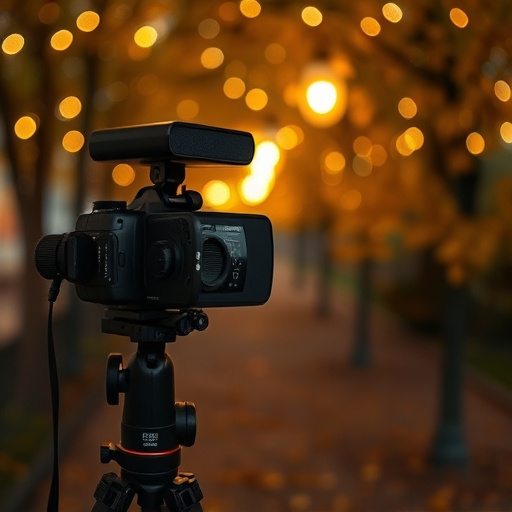In today's digital era, small hidden cameras in nurseries offer a discreet yet powerful solution for child safety and well-being. These surveillance tools enable staff to maintain close supervision, detect hazards, ensure proper care, and serve as evidence, fostering trust among parents, staff, and children. With strategic placement and advanced features like motion detection and night vision, these cameras enhance safety protocols while respecting privacy concerns and legal guidelines.
In today’s digital era, ensuring the safety and well-being of children in nurseries is paramount. Covert monitoring systems equipped with small hidden cameras have emerged as indispensable tools for nursery professionals. This comprehensive guide delves into the necessity of such systems, exploring various types of small hidden cameras suitable for nursery environments. We offer expert placement strategies to ensure optimal coverage while adhering to ethical considerations and legal guidelines, providing a safe haven for young minds.
- Understanding the Need for Covert Monitoring Systems in Nurseries
- Types of Small Hidden Cameras for Nursery Environments
- Professional Placement Strategies for Optimal Coverage and Safety
- Ethical Considerations and Legal Guidelines for Implementation
Understanding the Need for Covert Monitoring Systems in Nurseries
In today’s digital era, ensuring the safety and well-being of children in nurseries is of utmost importance. This is where covert monitoring systems, specifically small hidden cameras for nursery settings, play a pivotal role. While it might seem like an invasive measure, these discreet surveillance tools offer a comprehensive solution to monitor activities, protect vulnerable children, and provide peace of mind to parents and caregivers.
Nurseries often face challenges in maintaining close supervision due to staff-to-child ratios and the dynamic nature of play areas. Small hidden cameras allow for constant observation without disrupting the natural flow of activities. They can capture crucial moments, ensure proper care is being provided, detect potential safety hazards, and serve as invaluable evidence in case of any misconduct or accidents. This technology empowers nursery professionals to create a safer environment while fostering an atmosphere of trust between staff, parents, and children.
Types of Small Hidden Cameras for Nursery Environments
Nurturing a safe and secure environment in nurseries is paramount, and small hidden cameras play a pivotal role in achieving this. These discreet surveillance devices offer a range of options tailored to different nursery settings, ensuring every corner can be monitored effectively. From compact cameras designed to fit within toys or books to more advanced models concealed as everyday objects like clocks or plant pots, the variety caters to diverse needs.
Each type is equipped with features such as motion detection, night vision capabilities, and remote access via smartphone apps, providing nursery staff with real-time insights into children’s activities. This technology empowers caregivers to maintain a closer watch on infants and toddlers, enhancing safety protocols and fostering an atmosphere of trust between parents and the care facility.
Professional Placement Strategies for Optimal Coverage and Safety
When implementing a covert monitoring system, strategic professional placement is key for achieving optimal coverage and enhancing safety. One of the most sensitive areas requiring meticulous planning is the nursery. Small hidden cameras for nursery settings should be positioned discreetly yet effectively to monitor without compromising privacy or disrupting the natural environment.
For maximum effectiveness, consider placing these devices in high-traffic areas such as entry points, play zones, and sleep rooms. Mounting them on ceilings or walls ensures a wide field of view while remaining virtually invisible. Additionally, utilizing infrared technology and night vision capabilities allows for continuous monitoring around the clock, providing peace of mind and ensuring the safety and well-being of children in your care.
Ethical Considerations and Legal Guidelines for Implementation
Implementing a covert monitoring system, especially in sensitive environments like nurseries, requires a delicate balance between security and privacy. Ethical considerations are paramount when utilizing small hidden cameras for nursery settings to ensure the well-being and comfort of both staff and children. It is crucial to maintain transparency and obtain informed consent from parents or guardians, clearly communicating the purpose and extent of surveillance.
Legally, guidelines vary by jurisdiction, but general principles dictate that any use of hidden cameras must adhere to data protection regulations and respect individual privacy rights. For nurseries, this means installing cameras only in common areas and ensuring staff are trained to operate the system ethically. Regular audits and parent-focused transparency can help maintain trust while facilitating effective monitoring using small hidden cameras for nursery environments.
Covert monitoring systems, specifically designed for nursery environments, offer a crucial solution to ensure child safety and secure professional placements. By utilizing advanced small hidden cameras tailored for these spaces, caregivers can maintain optimal coverage while adhering to ethical considerations and legal guidelines. This guide has explored the necessity of such systems, detailed diverse camera options, provided strategic placement advice, and highlighted key legal and ethical parameters. Embracing these measures fosters a safer nursery setting, benefiting both children and professionals alike.
